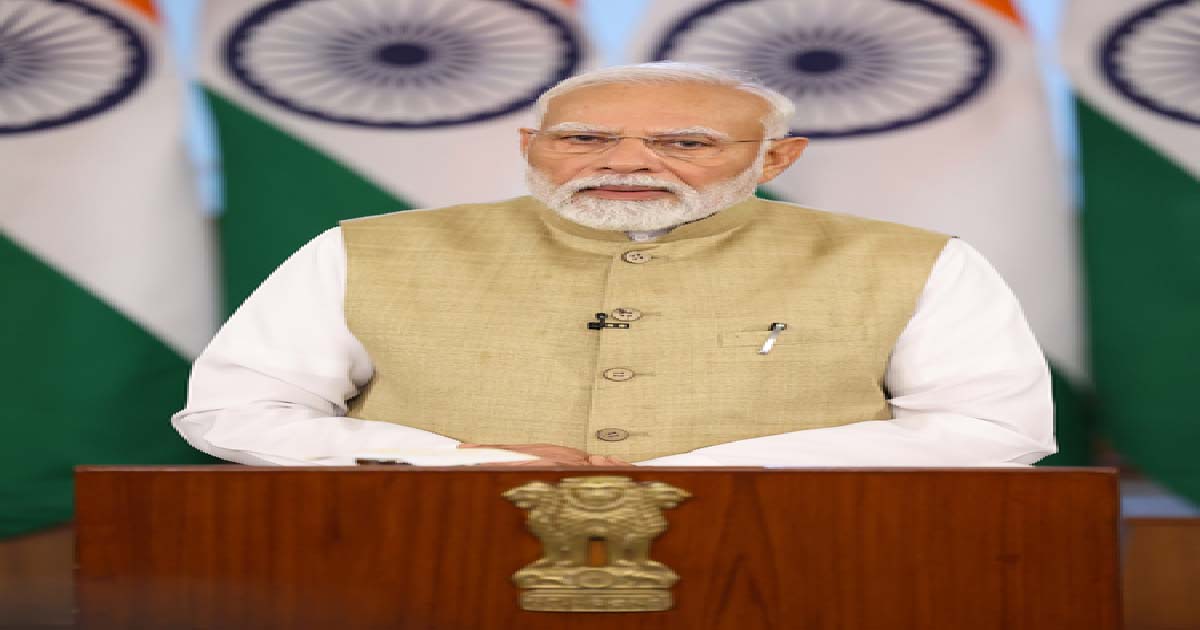International News
First 3 hostages arrive in Israel under Gaza truce deal

Jerusalem/Gaza, Jan 20: Three Israeli women, released from Hamas captivity in Gaza, arrived in Israel, the first day that a ceasefire agreement between Israel and Hamas took effect, according to Israeli officials.
The three — Emily Damari, 28, a British-Israeli; Doron Steinbrecher, 30, a veterinary nurse; and Romi Gonen, 23, abducted from the Nova music festival — were finally released on Sunday after 471 days in captivity.
They are the first of 33 Israeli hostages expected to be released.
Under the three-phase pact, Sunday marked the beginning of six weeks of calm, ending more than 15 months of intensive Israeli strikes that left Gaza in ruins and killed more than 46,900 Palestinians, according to an update from Gaza’s health authorities.
In a gradual release, Hamas will free every week about three to four hostages. In return, Israel will release hundreds of Palestinian detainees held in Israeli jails. The first 90, mostly women and children from the occupied West Bank and East Jerusalem, were released later on Sunday.
Hamas handed over the three female hostages to Israeli forces through the Red Cross in Gaza, the Israeli military said, adding that “a short while ago, accompanied by Israel Defense Forces (IDF) and Shin Bet forces, the released hostages crossed the border into Israeli territory”.
The three were taken to a reception point in southern Israel near the Gaza border, where they underwent an initial medical assessment and met their mothers, according to the military.
Israeli Prime Minister Benjamin Netanyahu said in a televised statement that the three “went through hell”.
“This is a great moment, an exciting moment,” he added. In an address to reporters, IDF Spokesman Daniel Hagari said, “Today, we salute and embrace them (three hostages) and their families as they reunite after so long.”
He added that Israeli forces have redeployed to the outskirts of Gaza and are “prepared for defence and offence” if Hamas violates the agreement.
Abu Ubaida, spokesperson for Al-Qassam Brigades, the military wing of Hamas, said on Sunday that Al-Qassam and other Palestinian factions are committed to the ceasefire deal.
“We, along with other resistance factions, declare our full commitment to the ceasefire agreement, but this remains contingent on the enemy’s adherence,” Ubaida emphasised in a television statement.
He said the October 7 “Operation Al-Aqsa Flood” against Israel, was a “turning point” in the history of conflicts with Israel, explaining that the resistance inflicted significant losses on the Israeli army, including the destruction of around 2,000 military vehicles and heavy casualties among soldiers.
“We have shattered the Israeli deterrence theory and forced the occupation to open multiple fronts,” he added.
Describing Gaza residents as “the pride of the nation and the symbol of its dignity,” Ubaida urged continued support for the resistance and steadfastness of the Palestinian people.
The ceasefire deal was implemented to end the fighting between Israel and Hamas that was triggered by Hamas’ cross-border assault on October 7, 2023, which resulted in the killing of 1,200 people in Israel and the kidnapping of about 250 others.
International News
‘My thoughts with those who lost loved ones’: PM Modi on Saudi bus accident

New Delhi, Nov 17: Prime Minister Narendra Modi on Monday expressed deep sadness over the loss of lives in the Saudi Arabia bus accident involving several Indian Umrah pilgrims and prayed for the swift recovery of the injured.
A passenger bus carrying several Indian Umrah pilgrims collided with a diesel tanker early Monday morning near Medina, the Indian mission in Jeddah confirmed.
In a post on X, PM Modi said, “Deeply saddened by the accident in Medinah involving Indian nationals. My thoughts are with the families who have lost their loved ones. I pray for the swift recovery of all those injured.”
“Our Embassy in Riyadh and Consulate in Jeddah are providing all possible assistance. Our officials are also in close contact with Saudi Arabian authorities,” he added.
In the wake of the accident, the Consulate General of India in Jeddah has set up a 24/7 control room and released helpline numbers for those seeking assistance.
Preliminary unconfirmed media reports indicate that most of the pilgrims are from Hyderabad. Given the intensity of the explosion caused by the collision, casualties are feared.
According to unconfirmed media reports, the bus was travelling from Mecca to Medina, with pilgrims heading to the holy city after completing their rituals in Mecca. All passengers were reportedly asleep when the crash occurred.
Rescue operations are underway, and local residents have rushed to the scene to assist those severely injured. The exact number of casualties has not yet been officially confirmed.
Further updates are awaited.
Telangana Chief Minister A. Revanth Reddy also condoled the loss of lives in the horrific accident involving a bus carrying Indian pilgrims in Saudi Arabia.
The state government has also set up a control room in Hyderabad to provide information and assistance to the families of the accident victims.
Business
India, Canada discuss ways to boost bilateral trade, promote investments

New Delhi, Nov 13: Commerce and Industry Minister Piyush Goyal and Maninder Sidhu, Canada’s Minister of International Trade, discussed ways to further boost bilateral trade and promote investments, it was announced on Thursday.
Sidhu is in India to find opportunities to advance trade and investment linkages between the two nations.
“It was a pleasure to co-chair the 7th India-Canada Ministerial Dialogue on Trade and Investment as part of the New Roadmap 2025 along with @MSidhuLiberal, Canada’s Minister of International Trade,” Goyal posted on the X social media platform.
The minister further stated that they discussed “avenues to strengthen bilateral trade, promote investments and deepen cooperation between our countries”.
During his India visit, Sidhu is set to promote Canada’s commitment to supporting and growing the well-established commercial ties shared by Canada and India, including artificial intelligence, clean technology and digital industries, and explore new opportunities for partnerships that benefit workers and businesses in both countries.
“This visit to India will reinforce Canada’s commitment to diversifying our trade relationships and attracting new investment,” an official statement quoting Sidhu said. “As one of the fastest-growing major economies, India offers significant opportunities for Canadian businesses and workers. Our commercial ties continue to expand — bilateral trade surpassed $30 billion in 2024 — and there is even greater potential ahead,” the statement added.
India is a key partner as Canada strengthens its economic links in the Indo-Pacific region under a comprehensive strategy for the region. In 2024, India was Canada’s seventh-largest goods and services trading partner, with two-way trade valued at $30.9 billion.
Meanwhile, External Affairs Minister (EAM) S. Jaishankar and his Canadian counterpart, Anita Anand, held discussions on strengthening cooperation across key sectors, including trade, energy and security. Both leaders met on the sidelines of the G7 Foreign Ministers’ Meeting in Niagara.
EAM Jaishankar also praised the progress made under the New Roadmap 2025, aimed at enhancing bilateral ties between India and Canada and expressed hope for rebuilding a stronger partnership.
Crime
Banned drugs worth Rs 45 crore smuggled from Myanmar seized in Mizoram; two held

Aizawl, Nov 13: The Assam Rifles, in a joint operation with Mizoram Police, recovered highly addictive Methamphetamine tablets valued at Rs 45 crore from Saitual district and arrested two drug peddlers, officials said on Thursday.
A defence spokesman said that based on specific intelligence about the movement of drugs on the Ngopa-Saitual road in northern Mizoram’s Saitual district, a joint operation was launched on the intervening night of Wednesday and Thursday.
The team of Assam Rifles established a vehicle check post, which intercepted the suspected vehicle carrying drugs at Ngopa.
During the search operation, 15 kg of banned Methamphetamine tablets worth Rs 45 crore were recovered from two persons — Rabizul Haq and Naasiruddin, both residents of Barpeta in western Assam.
Recovered contraband, smuggled from Myanmar, along with apprehended individuals and their vehicle, were handed over to the Saitual district Police for detailed investigation and further legal proceedings.
As part of its continuous efforts to curb the spread of the drug menace in Mizoram, the Assam Rifles conducted yet another successful anti-narcotics operation, the spokesman said.
Meanwhile, the Assam Rifles, in a joint operation with Assam Police, recovered heroin valued at Rs 4.65 crore from near Jhujang Pahar in Cachar district of southern Assam on November 11.
The November 11 drug seizure took place within two days in the same Cachar district.
The Assam Rifles, in a similar joint operation with Assam Police, recovered methamphetamine tablets worth Rs 6 crore on November 9. The banned methamphetamine tablets, also known as Yaba or party tablets, contain a mixture of methamphetamine and caffeine and are commonly referred to as the ‘crazy drug’.
The highly addictive drugs are very popular among drug addicts in India, Bangladesh and the neighbouring countries.
Notably, Myanmar shares a 1,643-km-long unfenced border with four Northeastern states — Mizoram, Arunachal Pradesh, Manipur and Nagaland — which serve as a key transit point for drugs, particularly heroin and methamphetamine tablets.
At least six of the 10 districts of Mizoram — Champhai, Siaha, Lawngtlai, Hnahthial, Saitual and Serchhip — share a 510-km border with Myanmar. Mizoram, Manipur, Tripura and southern Assam have turned into major corridors for drug smuggling from Myanmar, with the illegal consignments being ferried to other parts of the country and abroad.
-

 Crime3 years ago
Crime3 years agoClass 10 student jumps to death in Jaipur
-

 Maharashtra1 year ago
Maharashtra1 year agoMumbai Local Train Update: Central Railway’s New Timetable Comes Into Effect; Check Full List Of Revised Timings & Stations
-

 Maharashtra1 year ago
Maharashtra1 year agoMumbai To Go Toll-Free Tonight! Maharashtra Govt Announces Complete Toll Waiver For Light Motor Vehicles At All 5 Entry Points Of City
-

 Maharashtra1 year ago
Maharashtra1 year agoFalse photo of Imtiaz Jaleel’s rally, exposing the fooling conspiracy
-

 National News1 year ago
National News1 year agoMinistry of Railways rolls out Special Drive 4.0 with focus on digitisation, cleanliness, inclusiveness and grievance redressal
-

 Maharashtra1 year ago
Maharashtra1 year agoMaharashtra Elections 2024: Mumbai Metro & BEST Services Extended Till Midnight On Voting Day
-

 National News1 year ago
National News1 year agoJ&K: 4 Jawans Killed, 28 Injured After Bus Carrying BSF Personnel For Poll Duty Falls Into Gorge In Budgam; Terrifying Visuals Surface
-

 Crime1 year ago
Crime1 year agoBaba Siddique Murder: Mumbai Police Unable To Get Lawrence Bishnoi Custody Due To Home Ministry Order, Says Report












